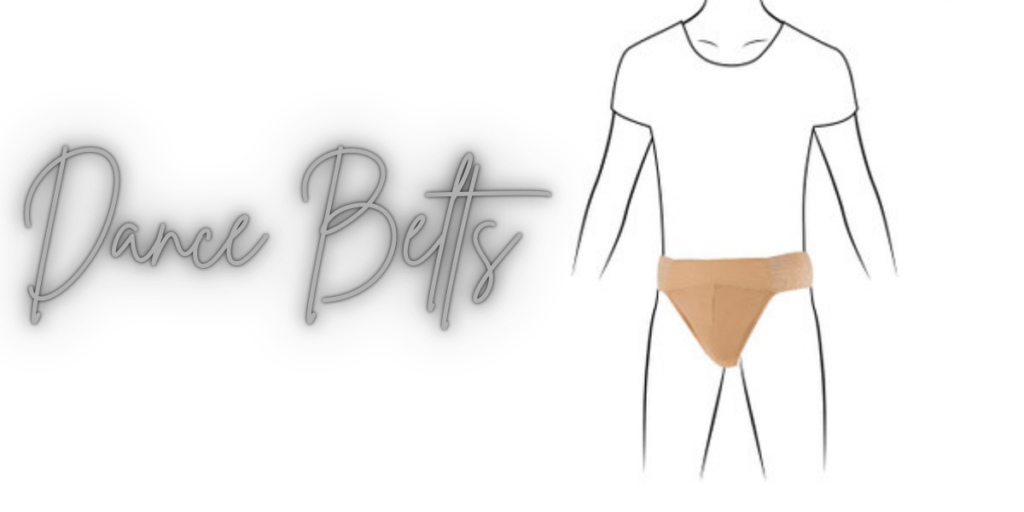Dance is not just an art form; it’s a physical expression that requires proper attire for optimal performance. One essential garment that often goes unnoticed but plays a vital role in a dancer’s comfort and support is the dance belt. In this comprehensive guide, we’ll explore everything you need to know about dance belts, including their purpose, types, how to choose the right one, and much more. Whether you’re a beginner or a seasoned dancer, understanding the importance of a dance belt will enhance your performance and comfort on stage.
What is a Dance Belt?
A dance belt is a type of undergarment designed specifically for male dancers, offering essential support and comfort during performances and rehearsals. It is typically made from stretchy, breathable materials that allow for maximum movement without restriction. A dance belt serves multiple purposes: it provides support to the genital area, prevents chafing, and ensures a smooth silhouette under costumes.
Why is a Dance Belt Important?
The importance of a dance belt cannot be overstated. Here are a few reasons why every male dancer should invest in one:
Support
The primary function of a dance belt is to provide support. Dancing involves a range of dynamic movements that can cause discomfort if proper support is not offered. A dance belt helps keep everything in place, reducing the risk of injury and discomfort.
Comfort
Comfort is paramount in any dance performance. The right dance belt minimizes chafing and irritation, allowing dancers to focus on their movements rather than their attire. Additionally, many dance belts are made from moisture-wicking fabrics, which help keep the body dry during intense rehearsals.
Confidence
Dancers often wear fitted costumes that may leave little room for error. A well-fitted dance belt not only provides support but also contributes to a sleek and polished appearance. Knowing that your attire is secure can boost your confidence on stage, allowing you to perform at your best.
Posture and Alignment
Proper support from a dance belt can help maintain good posture and alignment, which are crucial for both performance and injury prevention. A well-structured dance belt can remind dancers to engage their core and maintain proper form.
Types of Dance Belts
Dance belts come in various styles and designs to accommodate different preferences and needs. Here are the main types of dance belts available on the market:
Traditional Dance Belt
The traditional dance belt features a waistband and a supportive pouch that holds everything in place. This style typically has a minimal design, making it a favorite among many dancers. The fabric is often a blend of cotton and spandex for a comfortable fit.
Thong Dance Belt
For those who prefer less coverage, the thong dance belt offers a minimalistic design. It features a narrow strip of fabric at the back, providing less bulk while still offering support. This style is popular for performances that require a smooth silhouette.
Brief Dance Belt
The brief dance belt resembles regular underwear but is designed with extra support and stretch. This style is perfect for dancers who prefer more coverage while still maintaining comfort and support.
Long-Line Dance Belt
The long-line dance belt is designed for dancers who need extra support for their lower back and hips. It features a longer waistband that extends further down the torso, providing additional stability. This style is particularly beneficial for dancers who perform in more strenuous styles, such as ballet or contemporary dance.
Custom-Fit Dance Belt
Some brands offer custom-fit dance belts that allow dancers to specify their measurements for a more personalized fit. This option is great for those who struggle to find a dance belt that fits perfectly off the rack.
How to Choose the Right Dance Belt
Selecting the right dance belt is crucial for comfort and performance. Here are some key factors to consider:
Size
Always refer to the sizing chart provided by the manufacturer to ensure you select the correct size. A dance belt should fit snugly without being too tight. It’s essential to measure your waist and choose a size that corresponds to your measurements.
Fabric
Look for dance belts made from breathable and moisture-wicking fabrics. Materials like cotton, spandex, and nylon are commonly used for their flexibility and comfort. Avoid dance belts made from rough or irritating materials that can cause chafing.
Style
Consider the style that best suits your needs and preferences. Whether you prefer a traditional, thong, or brief style, choose one that makes you feel comfortable and confident.
Color
Dance belts are available in various colors, including nude, black, and other shades. Choose a color that will not show through your dance costume for a seamless look.
Price
Dance belts are available at various price points. While it’s essential to stay within your budget, remember that investing in a quality dance belt can significantly enhance your comfort and performance.
How to Care for Your Dance Belt
Proper care for your dance belt will extend its lifespan and maintain its quality. Here are some tips for caring for your dance belt:
Washing
Always follow the manufacturer’s washing instructions. Most dance belts can be machine washed on a gentle cycle with cold water. Avoid using bleach or harsh detergents, as these can damage the fabric.
Drying
Air-drying is recommended to prevent shrinking or damaging the elastic. Avoid using a dryer, as the heat can compromise the integrity of the materials.
Storage
Store your dance belt in a cool, dry place to prevent mildew or odors. Avoid cramming it into a drawer or bag, as this can cause it to lose its shape.
Common Misconceptions About Dance Belts
There are several misconceptions surrounding dance belts that can deter dancers from wearing them. Here are a few common myths debunked:
Dance Belts Are Only for Professional Dancers
Many amateur dancers also benefit from wearing dance belts. Whether you’re a beginner or a seasoned performer, proper support is crucial for comfort and performance.
Dance Belts Are Uncomfortable
While it’s true that some poorly designed dance belts can be uncomfortable, many modern styles are made with comfort in mind. Investing in a high-quality dance belt will ensure you find one that fits well and feels comfortable during use.
Dance Belts Are Only for Certain Dance Styles
Dance belts are essential for various dance styles, including ballet, jazz, contemporary, and even hip-hop. Regardless of the genre, proper support is necessary for all types of dance.
Conclusion
In conclusion, a dance belt is an essential piece of attire for male dancers, offering the support, comfort, and confidence needed to excel in performances. By understanding the various types of dance belts, how to choose the right one, and proper care, dancers can enhance their overall experience. Remember, investing in a quality dance belt is not just about support; it’s about feeling secure and confident on stage. Embrace the benefits of a dance belt, and let your dancing shine!
FAQs
What is the purpose of a dance belt?
A dance belt provides support to the genital area, prevents chafing, and ensures a smooth silhouette under costumes, enhancing comfort during performances.
How do I choose the right size for a dance belt?
Refer to the manufacturer’s sizing chart and measure your waist to find the correct size. A dance belt should fit snugly without being too tight.
Can I wear a dance belt for styles other than ballet?
Yes! Dance belts are suitable for all dance styles, including jazz, contemporary, and hip-hop, as they provide essential support regardless of the genre.
How do I care for my dance belt?
Follow the manufacturer’s washing instructions, typically washing in cold water on a gentle cycle and air-drying. Store it in a cool, dry place to maintain its quality.
Are there different styles of dance belts?
Yes, dance belts come in various styles, including traditional, thong, brief, long-line, and custom-fit options to cater to different preferences and needs.







